Valve guide repair is crucial for maintaining engine performance and preventing damage. Symptoms like bent push rods and ticking noises indicate potential issues. Briggs & Stratton offers repair kits with reamers, guides, and bushings to address worn or loose valve guides. Consulting a shop manual ensures accurate part selection, like part numbers 19232 and 231218, tailored to specific engine models.
1.1 Overview of Valve Guide Importance
Valve guides are critical components in Briggs & Stratton engines, ensuring proper alignment of valve stems and reducing wear. They prevent excessive oil consumption and maintain compression. If damaged, engines may lose performance, overheat, or suffer internal damage. Guides also minimize side loading on valve stems, preventing bent push rods and ticking noises. Regular inspection and repair are essential for longevity, as worn guides can lead to costly repairs. Briggs & Stratton offers specialized repair kits to address these issues, emphasizing the importance of maintaining valve guide integrity for optimal engine function. Properly functioning guides ensure efficient combustion, reducing the risk of premature engine failure.
1.2 Purpose of the Repair Kit
The Briggs & Stratton valve guide repair kit is designed to address worn or damaged valve guides, ensuring proper engine operation. The kit includes essential tools like reamers, new guides, and bushings to restore functionality. Its purpose is to prevent further engine damage, such as bent push rods or stuck valves, by providing a comprehensive solution. The repair process involves reaming the worn guide and installing a new bushing, ensuring precise alignment and reducing wear; This kit is tailored for specific engine models, making it a cost-effective alternative to replacing the entire head assembly. Consulting a shop manual is crucial for accurate part selection and safe repair. The kit’s components are engineered to maintain engine performance and longevity, ensuring reliable operation after repair.
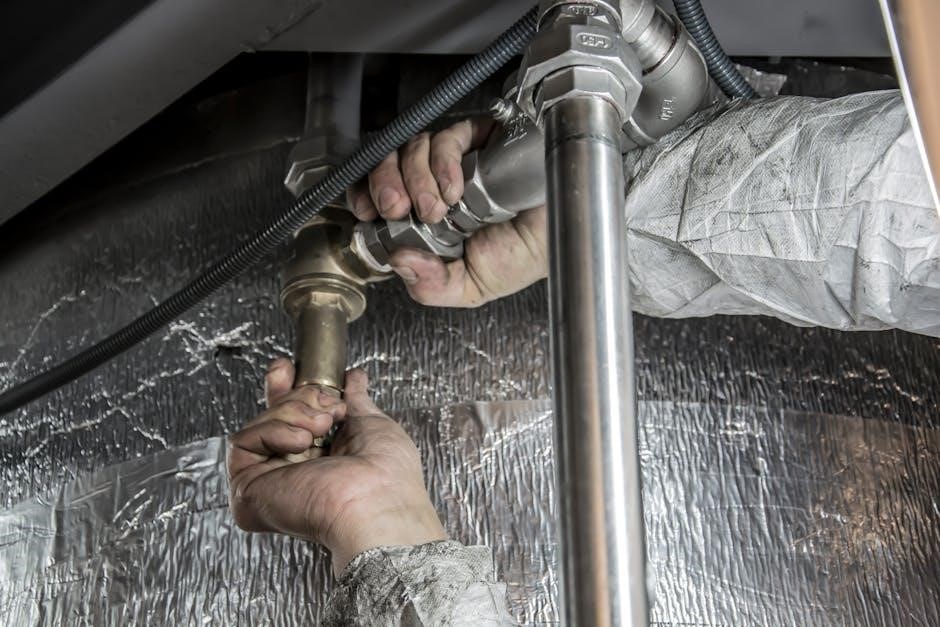
Symptoms of a Faulty Valve Guide
Common indicators include bent push rods, ticking noises, and valves stuck open. These issues arise from excessive wear or misalignment, leading to poor engine performance and potential damage.
2.1 Common Issues Indicating Valve Guide Problems
Valve guide issues often manifest through specific symptoms. A common problem is excessive wear on the valve stem, leading to increased clearance between the stem and guide. This can cause the valve to move improperly, resulting in poor engine performance, reduced power, and increased fuel consumption. Another frequent issue is the valve guide becoming loose or misaligned, which can cause the push rod to bend or the valve to stick open. Additionally, unusual ticking noises during engine operation may indicate worn or damaged valve guides. These problems can escalate if left unaddressed, leading to more severe engine damage over time. Regular inspection and maintenance are essential to identify and resolve these issues early.
2.2 Bent Push Rods and Ticking Noises
Bent push rods and ticking noises are clear indicators of valve guide problems. When the valve guide becomes loose or worn, it can cause misalignment in the valve train, leading to push rod bending. This misalignment also results in abnormal movement of the valve train components, producing a ticking or clattering noise during engine operation. The noise is often more pronounced at idle or low engine speeds. If left unaddressed, these issues can progress to more severe damage, such as valve stem wear or cylinder head damage. Identifying and addressing these symptoms early is crucial to prevent costly repairs and ensure proper engine function. Regular inspection of the valve train and push rods can help catch these problems before they escalate.
2.3 Valves Stuck Open: Causes and Consequences
Valves stuck open are often caused by worn or damaged valve guides, which prevent proper valve closure. This issue can stem from excessive wear, loose guide bushings, or debris buildup. When a valve remains open, it disrupts the engine’s combustion process, leading to reduced performance, decreased power, and potentially catastrophic damage. Over time, this can result in increased oil consumption, as oil may leak into the combustion chamber. In severe cases, a stuck valve can cause piston damage or cylinder head warping. Addressing the problem early is critical to avoid costly repairs. Repairing or replacing the valve guide and related components is typically necessary to restore proper valve function and engine operation. Regular inspections and maintenance can help prevent such issues from arising.
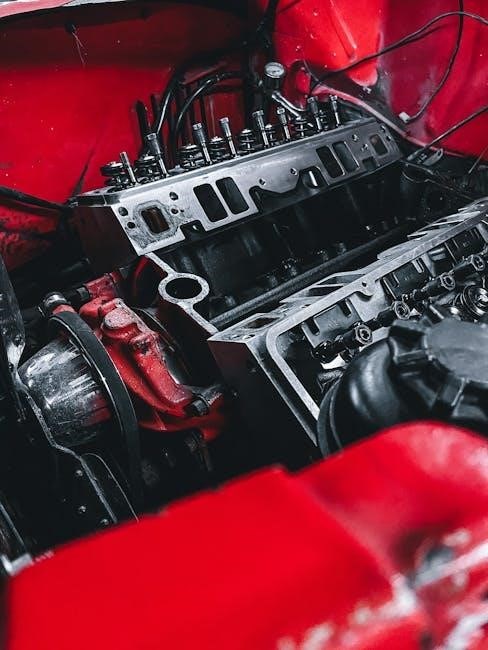
Understanding the Valve Guide
The valve guide plays a critical role in engine operation by aligning valve stems and preventing oil leakage. Wear from heat and friction can lead to guide failure.
3.1 Function in Briggs and Stratton Engines
In Briggs and Stratton engines, valve guides ensure precise alignment of valve stems, preventing misalignment and engine damage. They also act as a seal to contain engine oil, preventing leaks. Over time, wear from heat and friction can cause guides to loosen or deteriorate, leading to issues like bent push rods and performance loss. Regular inspection and maintenance are essential to identify wear early. Briggs provides repair kits tailored to specific engine models, such as part numbers 19232 and 231218, to address these issues effectively. Proper diagnosis and repair are crucial to restore engine functionality and longevity.
3.2 Common Issues and Wear Factors
Valve guides in Briggs and Stratton engines often experience wear due to excessive heat, high mileage, and improper lubrication. Over time, this wear can lead to loose guides, causing issues like bent push rods and ticking noises. Misaligned or worn guides can also result in oil leaks and reduced engine performance. In some cases, the valve may become stuck open due to guide deterioration. These problems are exacerbated by harsh operating conditions and lack of maintenance. Addressing these issues promptly is essential to prevent further damage and ensure optimal engine function. Briggs & Stratton repair kits are designed to alleviate these common problems by providing replacement parts tailored to specific engine needs.
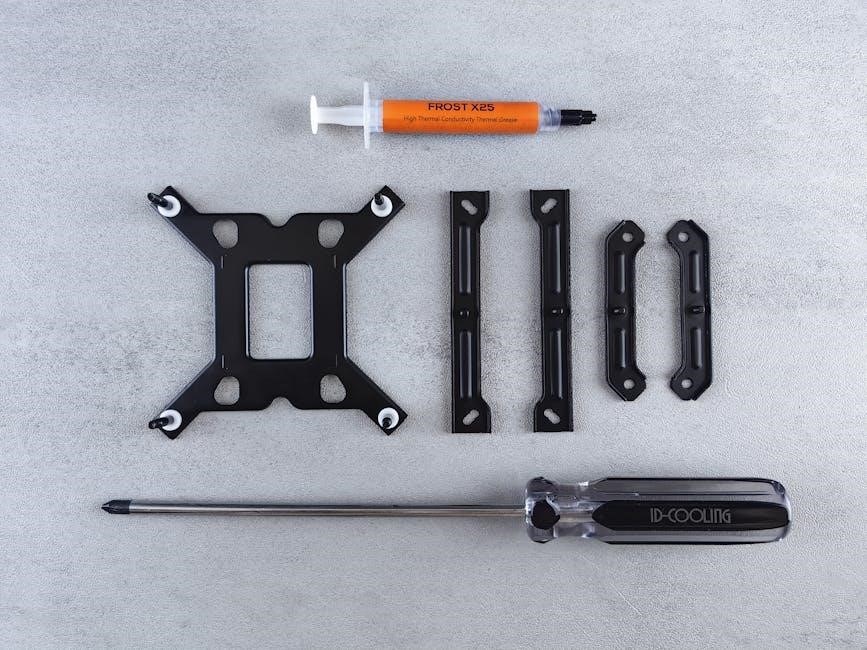
Diagnosing Valve Guide Problems
Diagnosing valve guide issues involves inspecting for wear, measuring guide clearance, and using specialized tools like reamers and pullers to assess damage accurately.
4.1 Inspection Steps and Techniques
Inspecting valve guides begins with removing the cylinder head to access the guides. Visually check for wear, scoring, or movement. Use a dial indicator to measure guide clearance; excessive play indicates wear. Next, inspect the valve stem for scoring or damage. Clean the area to ensure accurate assessments. Utilize specialized tools like reamers and guide bushings, such as part numbers 19183 and 19192, to evaluate the condition further. If the guide is loose or damaged, consider replacing it using the Briggs & Stratton repair kit. Always refer to the engine manual for specific instructions and torque specifications. Proper inspection ensures effective repairs and prevents future issues.
4.2 Measuring Wear and Determining Severity
Measuring valve guide wear is critical for assessing repair needs. Start by cleaning the guide and valve stem to ensure accurate measurements. Use a dial indicator to measure radial clearance between the valve stem and guide. Compare the reading to the manufacturer’s specifications. Excessive clearance indicates wear. Next, measure the guide’s bore depth using a micrometer or depth gauge. If the wear exceeds acceptable limits, replacement is necessary. Briggs & Stratton recommends using specialized tools like reamer 19183 and guide bushing 19192 for precise measurements. Severe wear may require installing a new valve guide bushing, such as part number 230655, to restore proper engine function. Always consult the repair manual for specific tolerances and procedures.
4.3 Role of Specialized Tools in Diagnosis
Specialized tools are essential for diagnosing valve guide issues in Briggs & Stratton engines. A valve stem dial indicator measures radial clearance, ensuring precise readings. Reamers, like part number 19183, help assess guide wear by enlarging the bore for inspection. Guide bushings, such as 19192, align tools accurately. Depth gauges measure bore depth, determining if replacement is needed. These tools ensure accurate diagnoses, preventing further damage. Using them correctly helps avoid costly repairs. Always follow the repair manual for proper tool usage and procedures.

The Repair Process
Valve guide repair involves removing the cylinder head, reaming worn guides, and installing new ones using specialized tools. Always follow the repair manual for precise steps.
Preparing the engine for valve guide repair requires careful planning. First, ensure the engine is cool to avoid any accidental burns or injuries. Disconnect the spark plug wire to prevent unintended ignition. Drain the fuel tank or disconnect the fuel line to minimize potential leaks. Remove all necessary components, such as the air filter and carburetor, to access the cylinder head. Use jack stands to secure the mower or equipment, ensuring stability. Gather all necessary tools and the repair kit, which typically includes reamers, new valve guide bushings, and a puller. Refer to the shop manual for specific instructions tailored to your engine model. This preparation ensures a smooth and safe repair process. Removing the cylinder head is a critical step in valve guide repair. Begin by draining the engine oil and cooling system to prevent fluid leakage. Disconnect the spark plug wire, fuel lines, and any other components connected to the head. Use a torque wrench to remove the head bolts in a star pattern to avoid warping the head. Carefully lift the head using a hoist or lifting straps, ensuring no components are damaged. If the head is stuck, apply penetrating oil and gently tap with a rubber mallet. Once removed, clean the area around the valve guides to prepare for inspection and repair. Specialized tools, such as a valve guide puller, may be required for stubborn guides. Always refer to the repair manual for specific instructions. Installing the repair kit begins with cleaning the cylinder head and valve guide area thoroughly. Use the reamer provided in the kit to carefully enlarge the worn valve guide bore to the specified diameter. Next, apply a thin layer of engine oil to the new valve guide and align it with the bore. Gently tap it into place using a soft-faced hammer. Ensure the guide is seated properly and level. Secure the guide by tightening the retaining ring or bushing as instructed. Reassemble the cylinder head, ensuring all components are aligned correctly. Tighten the head bolts in a star pattern using a torque wrench. Finally, reconnect all previously disconnected components and test the engine to ensure proper operation. Always refer to the repair manual for precise torque specifications. The cost of a Briggs & Stratton valve guide repair kit varies, typically ranging between $50 to $200, depending on the engine model and kit contents. The cost of a Briggs & Stratton valve guide repair kit typically ranges from $50 to $200, depending on the engine model and the specific parts required. Basic kits include essential components like reamers, guides, and bushings, while more comprehensive kits may add specialized tools. For example, part number 19232, a valve guide reamer, and bushing number 231218, are commonly needed and may cost around $100 combined. Additionally, if the head assembly requires replacement due to extensive damage, the expense can rise to $300–$600. DIY repairs are generally more cost-effective than professional services, but proper tools and manuals are essential for success. Always verify compatibility with your engine model to avoid unnecessary expenses.
A DIY valve guide repair using a Briggs & Stratton kit can save significant costs compared to hiring a professional. DIY kits typically range from $50 to $200, depending on the parts needed. In contrast, professional labor costs can add $200–$500 to the total expense, making the overall cost range $300–$700. For complex cases requiring head assembly replacement, professional fees may exceed $1,000. However, DIY requires mechanical skills and specialized tools, potentially adding $50–$100 for equipment. If confidence or experience is lacking, professional repair ensures warranty and reliability, albeit at a higher cost. Always weigh skills, time, and tools against the convenience of expert service when deciding the repair approach. Regular inspections and cleaning of valve guides prevent wear and tear. Proper lubrication and routine checks ensure optimal performance and longevity of Briggs & Stratton engines. Regular inspections of valve guides are essential to identify wear early. Start by listening for unusual noises like ticking, which may indicate bent push rods. Visually inspect the valve train for movement or misalignment. Use a Briggs & Stratton shop manual for guidance on specific checks. Clean the area around the guides to assess their condition accurately. Lubricate moving parts to prevent friction and wear. If loose or worn guides are found, consider using a repair kit with reamers and bushings, such as part numbers 19232 and 231218. Routine checks help prevent major damage and ensure smooth engine operation. Always follow manufacturer recommendations for maintenance intervals. Proper cleaning and lubrication are vital for maintaining valve guide health. Use a wire brush and solvent to remove dirt and carbon buildup from the guides; Lubricate the valve stem and guide surface with motor oil or silicone-based grease before reassembly. Avoid over-lubrication, as it can attract debris. Regularly cleaning prevents corrosion and ensures smooth operation. Always clean before lubricating to remove contaminants. For Briggs & Stratton engines, follow the manual’s recommendations for lubricants. This maintenance extends the life of valve guides and prevents premature wear. Keep the area around the guides clean to avoid dirt ingress. Lubrication should be part of routine maintenance to ensure optimal engine performance and longevity. Preventative measures ensure valve guides last longer and reduce repair needs. Regular inspections catch issues early, preventing major damage. Keep the engine well-maintained, with clean oil and filters, to reduce wear. Avoid extreme engine temperatures and overload, which stress components. Lubricate valve stems and guides as part of routine maintenance. Replace worn or damaged parts promptly to prevent further issues. Use genuine Briggs & Stratton parts for compatibility and durability. Proper torque specifications during reassembly prevent loosening over time. Store equipment in a dry, clean environment to avoid rust. Following the manufacturer’s maintenance schedule is key to extending valve guide lifespan and overall engine health. These steps help maintain performance and reduce the risk of costly repairs. A Briggs & Stratton engine user fixed a bent push rod caused by a loose valve guide using a repair kit. The solution restored engine performance effectively. Online forums reveal numerous user experiences with Briggs & Stratton valve guide repairs. Many users reported success using repair kits, emphasizing the importance of proper tools and manual guidance. Some shared creative solutions, like using center punches to secure loose guides, while others stressed the necessity of replacing the entire head assembly when guides are beyond repair. Videos and tutorials were frequently cited as helpful resources. Common issues included bent push rods and stuck valves, often resolved by following step-by-step repair manuals. These discussions highlight the community’s resourcefulness and reliance on official Briggs & Stratton parts for durable fixes. Several users shared successful valve guide repairs using Briggs & Stratton kits. One user fixed a bent push rod by reaming and installing a new guide bushing, restoring engine performance. Another detailed a step-by-step repair on a Simplicity mower, highlighting the importance of proper tools and alignment. Lessons learned include adhering to manual specifications, measuring wear accurately, and avoiding over-reaming. Many emphasized the value of preventive maintenance, such as regular valve lash adjustments, to prevent future issues. These stories underscore the effectiveness of the repair kits when used correctly and the satisfaction of achieving professional-grade results through DIY efforts. Essential tools include reamers (e.g., part no. 19183), guide bushings (e.g., 19192), and pullers. A shop manual is crucial for accurate repairs. Materials like replacement valve guide bushings ensure proper fitment and functionality. To successfully repair a Briggs and Stratton valve guide, specific tools are required. A reamer (e.g., part no. 19183) is necessary for resizing the valve guide bore. Guide bushings, such as part no. 19192, ensure proper alignment during reaming. A puller is essential for removing the old valve guide safely. Additionally, a valve spring compressor is needed to access the guide without damaging surrounding components. A set of wrenches and sockets, including Torx and Allen keys, are indispensable for disassembly. Specialized tools like a micrometer and dial bore gauge help measure wear accurately. Always refer to the shop manual for specific tool recommendations tailored to your engine model. Proper tools ensure a precise and effective repair, preventing further engine damage. The essential materials for a Briggs and Stratton valve guide repair include the valve guide repair kit, which typically contains reamers, guide bushings, and pullers. Specific parts like the reamer (part no. 19183) and guide bushing (part no. 19192) are crucial for precise repairs. If the valve guide is severely damaged, a new head assembly, including valves and springs, may be required. These materials can be sourced from authorized Briggs and Stratton dealers or reputable online retailers. Always verify part numbers using the engine’s model and serial number to ensure compatibility. Genuine Briggs and Stratton parts are recommended to maintain engine performance and durability. Avoid using non-precision or aftermarket parts, as they may lead to further issues. Consult the shop manual for detailed part numbers and sourcing guidance. Always wear safety goggles, gloves, and a face mask when working with engine components. Ensure the workspace is clean and well-ventilated to avoid accidents and exposure to harmful substances. When performing a Briggs and Stratton valve guide repair, it’s essential to use proper safety gear. Wear safety goggles to protect your eyes from debris and chemicals. Gloves prevent cuts and abrasions while handling tools and engine parts. A face mask is recommended to avoid inhaling dust or metal shavings during grinding or reaming processes. Ensure the workspace is well-lit and clear of flammable materials. Keep a fire extinguisher nearby, especially when working with fuels or oils. Proper ventilation is crucial to prevent the buildup of harmful fumes. Always follow the manufacturer’s safety guidelines for tools and equipment to minimize risks during the repair process. A well-prepared workspace is critical for safe and efficient valve guide repairs. Begin by clearing a sturdy, flat work surface and covering it with a protective cloth or mat to prevent damage and keep parts organized. Ensure proper lighting, such as LED work lights, to illuminate the area clearly. Position an oil drain pan nearby to catch any spills during disassembly. Use a parts organizer or tray to keep small components like screws and bushings from getting lost. Maintain good ventilation to avoid inhaling fumes from cleaning solvents or lubricants. Secure the engine firmly to prevent movement during repairs. Keep a fire extinguisher within reach and ensure no flammable materials are nearby. Finally, ensure children and pets are kept away from the workspace to avoid distractions or accidents. Thank you for following this guide on Briggs & Stratton valve guide repair. Remember to stay safe, use proper tools, and consult manuals for precise instructions. Good luck with your repairs! Successful valve guide repair involves several critical steps. First, ensure the engine is prepared by draining fluids and disconnecting essential components. Safely remove the cylinder head to access the valve guides. Inspect for wear or damage, then use specialized tools like reamers and bushings from the repair kit to restore the guides. Proper alignment and installation are vital to prevent future issues. Finally, reassemble the engine and test performance. Always refer to the Briggs & Stratton manual for specific instructions and part numbers, such as 19232 and 231218, to ensure accuracy and longevity of the repair. Patience and precision are key to a successful outcome. Repairing your Briggs & Stratton valve guide is a manageable task with the right tools and knowledge. Don’t hesitate to tackle this project—success is within reach! Start by gathering the repair kit and consulting the manual for clear guidance. Watch tutorials and forums for additional insights from experienced mechanics. Remember, patience and attention to detail are key. Each step completed brings you closer to restoring your engine’s performance. DIY repairs not only save money but also build confidence in your ability to maintain your equipment. Take pride in your work and trust the process. With careful execution, you’ll enjoy a smoother-running engine and the satisfaction of a job well done.5.1 Preparing the Engine for Repair
5.2 Removing the Cylinder Head Safely
5.3 Installing the Repair Kit: Step-by-Step
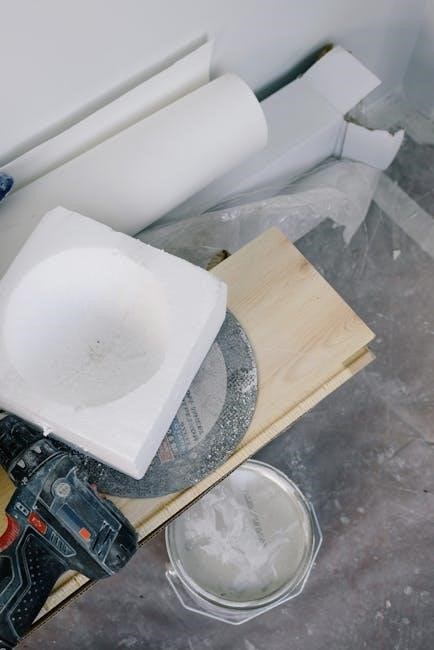
Cost Considerations
6.1 Expense of Repair Kits and Parts
6;2 DIY vs. Professional Repair: Cost Comparison

Maintenance and Prevention
7.1 Routine Checks for Valve Guides
7.2 Cleaning and Lubrication Best Practices
7.3 Preventative Measures for Longevity
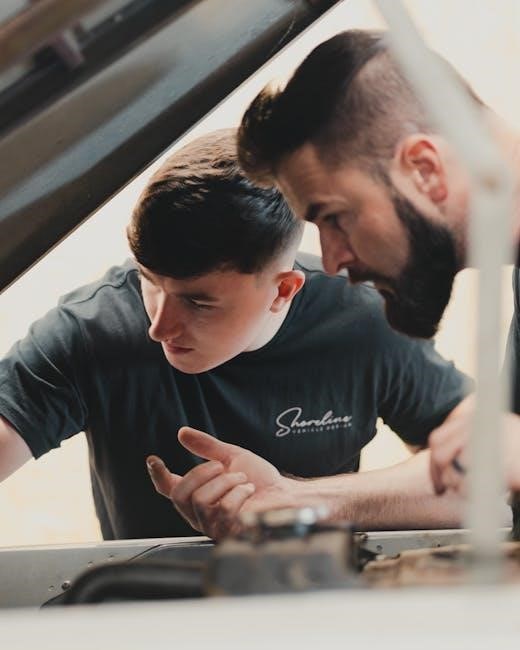
Case Studies and Real-Life Examples
8.1 Forum Discussions and User Experiences
8.2 Successful Repair Stories and Lessons Learned

Tools and Materials
9.1 Essential Tools for the Repair
9.2 Required Materials and Where to Source Them
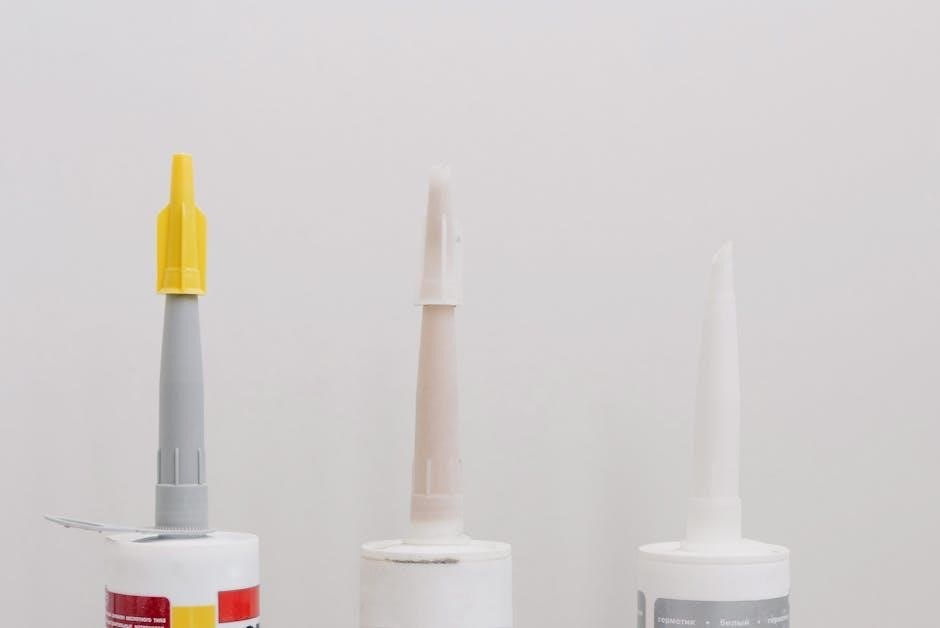
Safety Precautions
10.1 Safety Gear and Protective Equipment
10.2 Workspace Setup for Safe Repairs
11.1 Recap of Key Repair Steps
11.2 Encouragement and Confidence Building
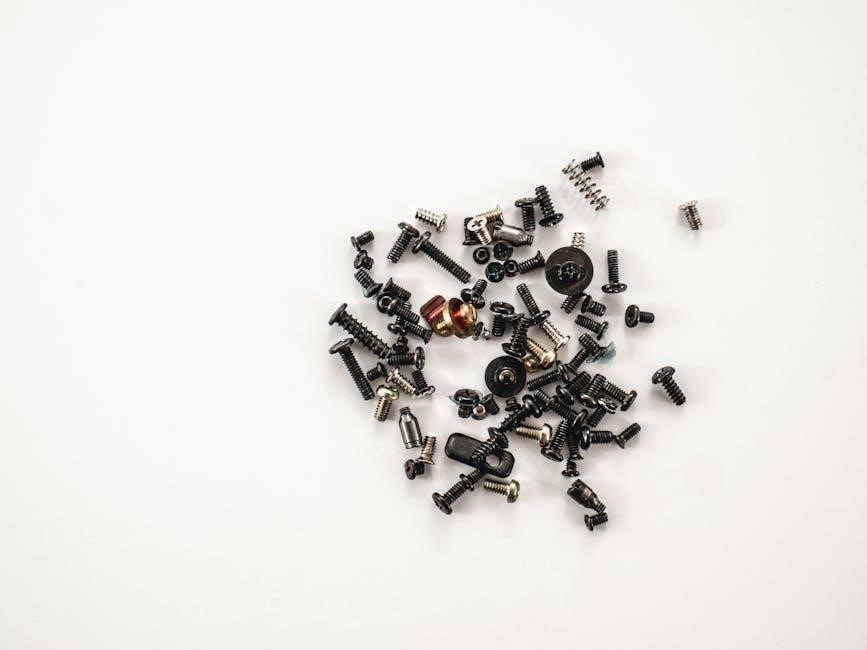
Leave a Reply
You must be logged in to post a comment.